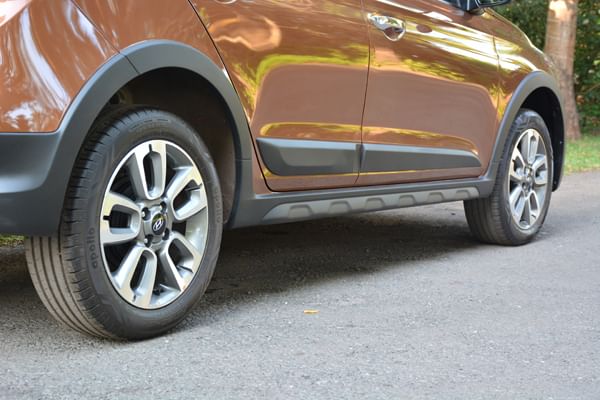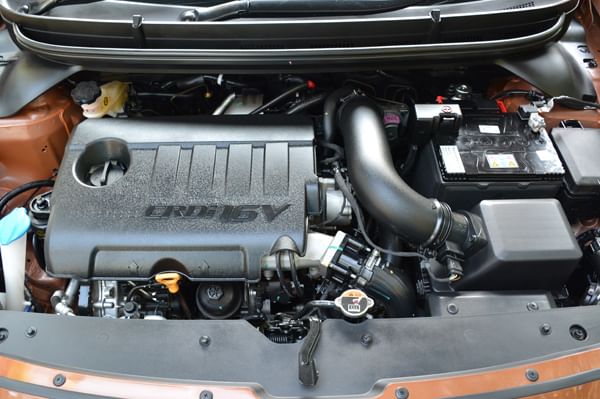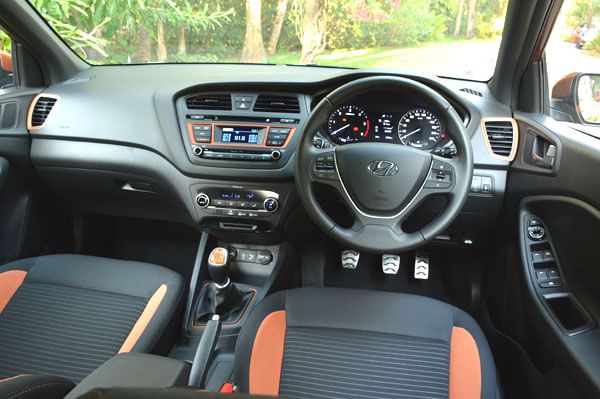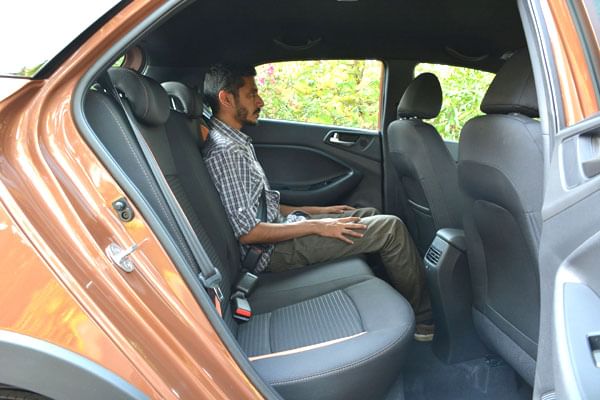Hyundai i20 Active Overview
What is it?
When Hyundai sees a niche in the market that’s gaining popularity, you can bet they’ll jump right into it. It’s a strategy adopted by a lot of carmakers in our rapidly evolving market these days, but you have to hand it to Hyundai for doing its research and, more often than not, delivering a really attractive product. Still, one might question if this new car – the i20 Active – is perhaps a niche too far, even for Hyundai. As is plain to see, the Active is a ‘cross’ version of the popular i20 premium hatchback. It enters a segment of regular hatchbacks that are adorned with more rugged bumpers, body cladding and roof rails for a bit more pizzazz. It’s meant to cash in on the strong visual appeal of SUVs, without having to design and engineer an all-new car. But then some manufacturers go further than others. The VW Cross Polo and Toyota Etios Cross, for example, have only cosmetic additions to separate them from their hatchback donor cars, while the Fiat Avventura also has a raised and revised suspension, and its spare wheel mounted on the tailgate. Hyundai has gone halfway – it doesn’t have a boot-mounted spare, but its ground clearance is up by 20mm from the i20, to 190mm.
There’s plenty of that rugged look too, with loads of matte grey cladding around the base of the car, faux skid plates and chunky roof rails up top. The higher ground clearance makes the 16-inch alloy wheels – a new design – appear smaller than they actually are. The new bumpers, both front and rear, feature big round fog lamps, and the big hexagonal grille now has prominent horizontal slats, rather than a honeycomb pattern. What Hyundai fans will really like, though, are the new headlamps which, like the European i20, feature LED daytime running lights, projector beams and even cornering lights. Other subtle touches include a chunky new fuel filler lid and a gloss-finished black C-pillar.
Hyundai i20 Active Page 2
On the inside, the design and the equipment list are as before, but the colour palette is a bit different. On cars with lighter exterior paint shades like white or silver, the i20 Active gets blue and black two-tone upholstery. On cars with darker exterior colours – including the new brown colour you see here – there’s a funkier looking theme – all black with certain accents finished in orange, including the gear lever; very sporty. It’s also worth noting that the petrol car isn’t available in the fully loaded trim, so you’ll miss out on some equipment, like push-button start, automatic climate control and a passenger airbag.
What is it like to drive?
The outright performance is not too different from the standard car; not surprising since the engine outputs remain exactly the same. Hyundai says it has reworked the gearing in the i20 Active – both the petrol and the diesel versions – for better bottom end responses; six percent better in the petrol and 11 percent in the diesel, the company claims (with a minor dip in fuel economy).
The 1.4-litre CRDi motor with 89bhp is still smooth, very refined and loves to rev in a manner most unlike a diesel engine. The light, six-speed manual gearbox can be left in a higher gear at lower-than-average revs, and the car will move forward with little hesitation. It’s still a pretty strong performer too, and as for the improved responses, it does feel a touch more urgent than before, but we’ll have to put it up against our timing gear to tell you just how much. The bump in low end responses are even less apparent in the petrol, but this still remains one of the peppier units amongst the 1.2-litre naturally aspirated units in India.
Hyundai says it didn’t want to raise the suspension to more than 190mm because it didn’t want to compromise on the car’s styling, and because it wanted to keep the dynamics intact. The handling, as before, is agreeable and pretty good by Hyundai’s previous standards, but the very light and inconsistently weighted steering stop it from being a very engaging car to drive. It has to be said, however, that though there is some body roll, it is impressively contained for a car that rides higher than before.
The ride, correspondingly, seems a little better than before. It still elicits a thunk over bumps and the suspension sounds a bit clunky too, but it does seem to have a slightly softer edge now at lower speeds. Again, the difference is so subtle, that it would take a back-to-back drive with an i20 hatchback to confirm how true this is.
Hyundai i20 Active Page 3
Should I buy one?
That depends on how you view the cross hatchback – or Sports Styled Vehicle, in Hyundai parlance – segment, itself. On one hand, these are ultimately still hatchbacks, with no added hardware to back up their off-road looks, and so what you’re paying a premium for are ‘go harder’ looks without the substance to back them up. It seems a little superficial. However, if you think of these cars as the range-topping variants of their hatchback counterparts that just happen to come with more distinctive styling and a bit more equipment, then the premium becomes easier to justify. Hyundai has also added the benefit of a little more ground clearance which, though it doesn’t do wonders for the car’s styling, does add a bit more utility to the car.
As far as cross hatchbacks go, then, this is a great example – not over-styled, but just distinctive enough to stand out from the thousands of i20s that already ply our streets. It has all of Hyundai’s core strengths – equipment, styling and ease of use, but also suffers from its usual weaknesses – primarily an unengaging driving experience. Its use of funky interior colours is a bit adventurous, but we think it works in a more ‘lifestyle-oriented’ vehicle like this.
We have to say, however, that its biggest strength comes from the fact that its donor car – the i20 – is such a capable product, and less so from the rugged styling add-ons that the Active brings with it. For most, we still think the i20 hatchback will be more than car enough, but for those who want something more distinctive, the i20 Active is clearly one of the best cars of its kind. However, at a price that's around Rs 90,000 more than the equivalent i20, this top-end SX trim bears a heavy premium, so you will have to shell out a lot to stand out from the crowd.




 Hyundai i20 Active NA
Hyundai i20 Active NA  Honda WR-V ₹ 9.63 - 13.13 lakh
Honda WR-V ₹ 9.63 - 13.13 lakh  Ford Freestyle ₹ 6.65 - 9.77 lakh
Ford Freestyle ₹ 6.65 - 9.77 lakh  Fiat Avventura NA
Fiat Avventura NA  Fiat Urban Cross NA
Fiat Urban Cross NA